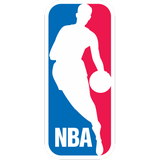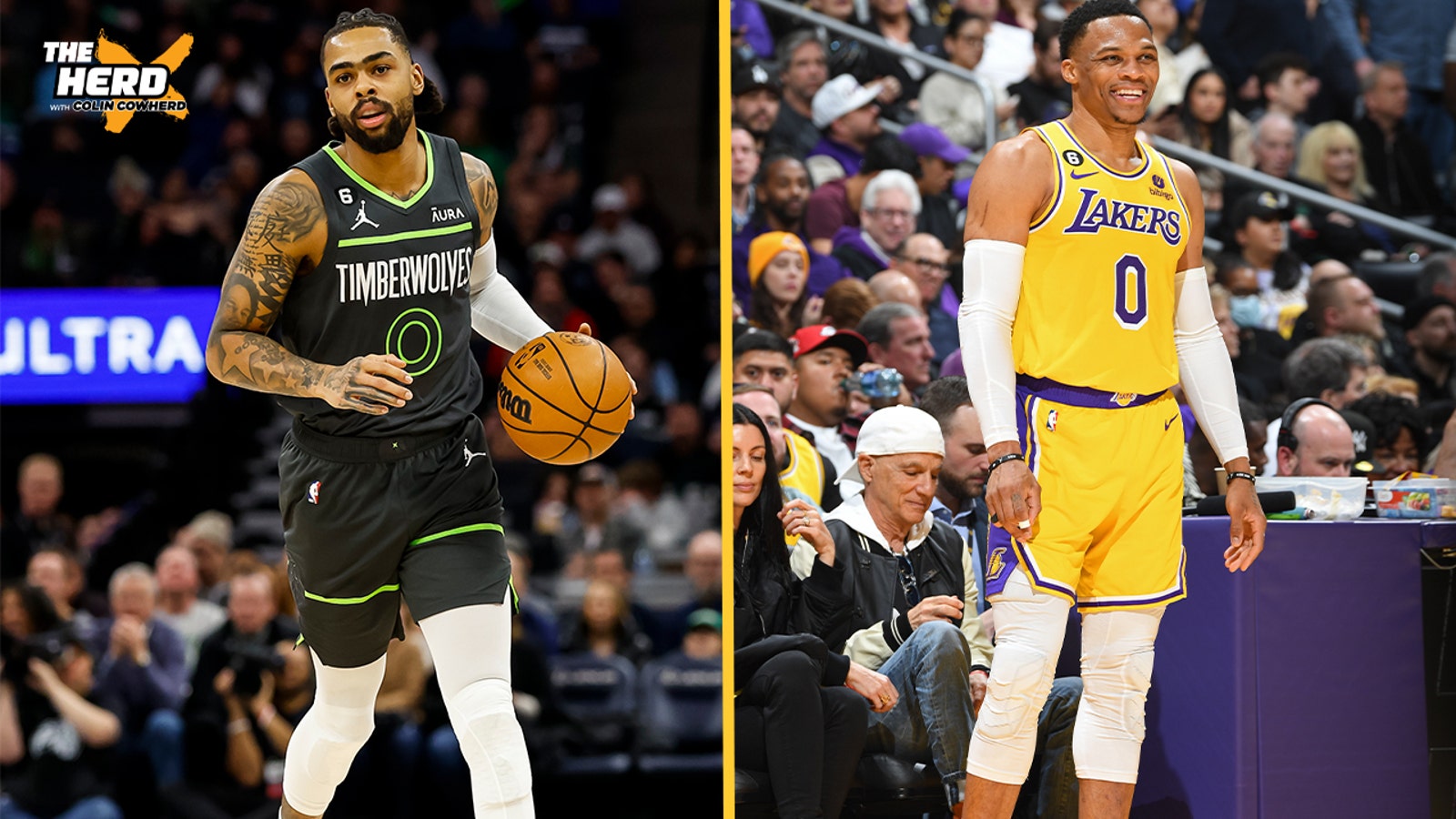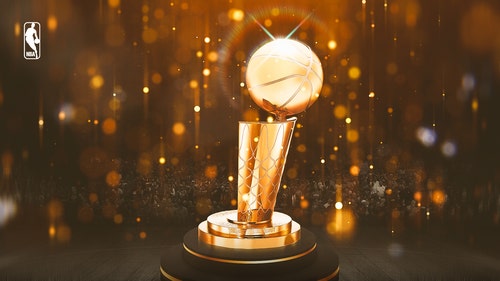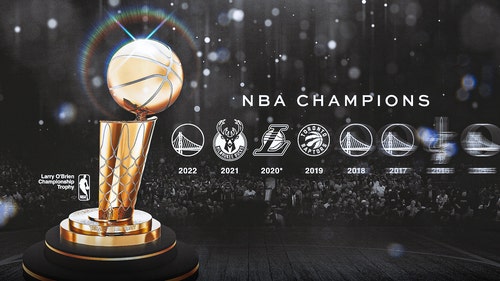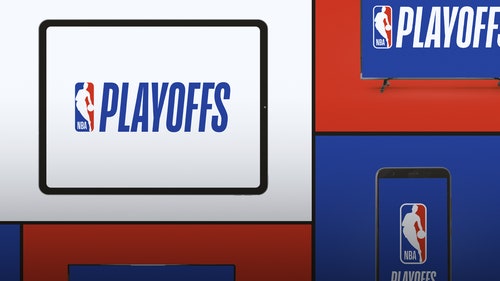
2023 NBA trade grades: How did Clippers, Warriors do at trade deadline?
NBA trade season is here! The deadline is Feb. 9, and we're finally beginning to see teams discuss and pull off mega-deals.
Here are our grades for completed swaps:
Feb. 9: Clippers make wholesale changes
Clippers get: Bones Hyland, Mason Plumlee, Eric Gordon
Clippers trade: John Wall, Reggie Jackson, Luke Kennard
Grade for Clippers: B
Being a successful software developer requires a great deal of trial and error and fixing bugs even after a program or operating system has been launched. No one knows that better than Clippers owner Steve Ballmer, who got his start to billionaire status at Microsoft.
No one runs their team quite like it, either.
In a flurry of draft-day trades, the Clippers deleted their two point guards, Reggie Jackson and John Wall, and replaced them with 34-year-old Eric Gordon from the Rockets and 22-year-old Bones Hyland from the Nuggets. They also added depth to their big-man rotation, acquiring 6-foot-11 Mason Plumlee from Charlotte.
Coming into the season, the Clippers were considered the team to beat in the West, thanks to a massive payroll that made them the deepest team money could buy, with nine players making $10 million or more. While the Clippers have shown flashes of their potential, they’ve been a long way from dominant, and after falling to the Dallas Mavericks with Luka Doncic in street clothes and Kyrie Irving in a Mavericks uniform for the first time the night before the trade deadline, it’s hardly surprising the twitchy Ballmer opted to make some changes.
It was no secret that the Clippers were looking to upgrade at point guard. They currently stand 25th in both pace and assists, in part because most of their playmaking comes from small forward Paul George, with Jackson contributing largely as a spot-up shooter when George was on the floor and sharing those duties with Kawhi Leonard when George wasn’t. Jackson never looked as comfortable as he did last season when his role was more clearly defined with Leonard out because of ACL surgery. Wall was simply an insurance policy or flyer — signed earlier this season after the Rockets bought him out — that never paid off. The Clippers also sent Luke Kennard to the Memphis Grizzlies as part of the three-team deal that brought in Gordon.
But the Clippers’ supposed pre-deadline targets were floor leaders with championship experience, namely the Heat’s Kyle Lowry and Raptors’ Fred VanVleet, neither of whom were moved. Gordon and Hyland are far less expensive alternatives, but they’re also far less experienced.
Plumlee fills their need for a bona fide back-up center. Ivica Zubac, the Clippers 7-foot starter, has played consistently well, but if he had foul trouble or needed a break, coach Tyronn Lue had no choice but to plug in Marcus Morris Sr. or Nicolas Batum, both of whom are 6-foot-8.
So — will these moves inspire the Clippers to realize their anticipated potential? Hard to say, but doubtful. Aside from needing a poised playmaker, the Clippers appear starved for a leader and neither Gordon nor Hyland have the personality or pedigree to hold Leonard and George accountable. Familiarity also has been an issue for the Clippers, with Leonard and George in and out of the lineup all season due to injury or injury prevention. Jackson is the only player they’re losing that played consistently, but they’re still adding three brand-new faces to the rotation, and at least one to the starting lineup, with 24 games left in the regular season.
As with many bug fixes, it’s hard to know what effect the Clippers’ modifications will have until they get a healthy test run. Unlike in his previous concern, Ballmer can’t test his new components in privacy. But also like his previous concern, fixes are an admission that what they had wasn’t working, and he had become convinced it never would.
Feb. 9: Warriors undergo cost-cutting makeover
Warriors get: Gary Payton II
Warriors trade: James Wiseman
Grade for Warriors: C-
After the gut punch of Steph Curry’s recent knee injury, the Warriors desperately needed to add more than just another quality rotational player — they needed to find an emotional lift. Mission accomplished. Retrieving wing defender Gary Payton II from the Blazers doesn’t just add a solid and desperately needed defensive wing to their bench, it brings back a player who was part of their championship formula and beloved in the locker room.
So why the relatively low grade? Because of what it cost. The Warriors essentially flipped the No. 2 pick of the 2020 draft, James Wiseman, to retrieve an undrafted defensive specialist that walked in free agency. Had the Warriors stopped at sending Wiseman to Detroit for five second-round picks and Kevin Knox — who was also moved on to Portland — they would’ve merited an F.
To be clear, this wasn’t just about adding to the Warriors’ bench. It was also about cutting costs. With the Warriors facing both luxury and repeater tax penalties, exchanging Wiseman’s $12 million salary next season for Payton’s $9 million is a hefty savings, far more than $3 million. There’s nothing wrong with being fiscally smart. But the Warriors have been multitasking all year, trying to develop a bevy of young talent while chasing another ring with their championship core of Steph, Draymond Green and Klay Thompson. They’ve shown themselves not to be very good at it. Let’s see if trying to do two things at once at the trade deadline is any more successful.
Feb. 8: Kevin Durant to Suns in stunner
Suns get: Kevin Durant, T.J. Warren
Nets get: Mikal Bridges, Cam Johnson, Jae Crowder, four first-round picks, 2028 pick swap
Grade for Nets: A+
What. A. Haul. What the Nets extracted from the Phoenix Suns for Kevin Durant and T.J. Warren is reminiscent of what the Los Angeles Lakers forked over for Anthony Davis. Or the Minnesota Timberwolves gave the Utah Jazz for Rudy Gobert. Yes, Durant is a more accomplished star still playing at a higher level than either Davis or Gobert. And, yes, this leaves Brooklyn without a superstar. And, yes, there is a certain soap-operatic deliciousness that the Suns put both Jae Crowder and Cam Johnson in the deal, Crowder becoming persona non grata with coach Monty Williams for balking at Johnson getting his starting job. But considering that this was essentially a triage operation after Kyrie Irving forced his way to Dallas and Durant refused to wait until this summer to get moved, Marks deserves high, uh, marks for forging a deal in 72 hours that gives him a solid set of assets for a makeover.
The real lucre is in the details. The four first-round picks the Nets are getting are unprotected, and they have the rights to swap a fifth. In Bridges and Johnson, they are acquiring what no team in the league can have enough of: young, athletic, two-way wings. In this era of load management, Bridges is a throwback, refusing to ever sit, and is in the first year of an uber-reasonable four-year, $90 million deal. Johnson is another solid wing just entering his prime and a restricted free agent.
Looking at the character of the players Marks targeted, it would appear he’s looking to recapture the identity and spirit he built before Durant and Irving announced in free agency that they planned to grace the Nets with their services. The Nets were a hard-working, greater-than-the-sum-of-their-parts squad that surprised everyone by snaring the East’s sixth seed with their first winning record in five seasons with point guards D’Angelo Russell and Spencer Dinwiddie as their leading scorers. With Dinwiddie back, and joined in the Irving trade by another quality wing in Dorian Finney-Smith, the Nets have assembled a very similar sleep-on-them-at-your-peril squad. They might not be able to hold on to their current fifth-seed perch, but there’s no reason they can’t still make the playoffs.
Having that as a possibility after trading both Irving and Durant is quite a feat.
How Kevin Durant makes Suns a contender
Grade for Suns: C-
Mat Ishbia has been an NBA owner for only a few 24 hours, and it feels as if the Brooklyn Nets took full advantage of that fact. Kevin Durant, Chris Paul and Devin Booker makes for one hell of a magazine cover or banner on the outside of the team’s home, the Footprint Center. You know what else made for a hell of a magazine cover? Kevin Durant, Kyrie Irving and James Harden. As did LeBron James, Anthony Davis and Russell Westbrook. What price did their teams pay to put those "Big Threes" together? And what did that price ultimately get them?
It’s not that a combination of Durant, Paul and Booker can’t work. They have complementary skills. It’s what it cost, or rather, what they paid — three players who did the bulk of the dirty work the last two-plus years and a big chunk of the draft capital to replace them. It feels like a hasty move by the Suns when the Nets should’ve been the ones sweating.
Granted, the entertainment value is going to be off the charts. The thought of seeing KD and Booker on the wings with Paul running point and DeAndre Ayton rolling to the rim — yikes! But the Suns started off the season still pining for a championship after reaching the Finals two years ago and then posting the best record in the league last year before their second-round seven-game face-plant against the Mavericks. The hallmark of recent championship contenders has been a combination of star power and depth. Not too much of the former and enough of the latter. The defending champion Warriors lost their depth, and now they’re struggling to stay above .500. The runner-up Boston Celtics increased their depth and they’re riding higher than ever.
Whether the Suns want to admit it or not, they were already ruing having sent Crowder home. Warren coming with KD eases the drain a bit, but still, if the starting five are KD, Booker, Paul, Torrey Craig and Ayton, Monty Williams is looking at a choice of Warren, Landry Shamet, Josh Okogie, Cam Payne or Damion Lee as perimeter subs.
And is it unfair of me to point out that Booker, Durant and Paul have all proved to be injury prone the last couple of seasons, missing extended periods of time? Or that the Suns appear ready to move on from both Paul and Ayton? Perhaps that’s part of the master plan — take a crack at a title run with Durant and then find pieces to build around Booker and Durant moving forward by moving Paul and Ayton. If that proves to be the case, there’s potential for this grade to be raised with extra credit from their next one.
In the meantime, let’s thank Ishbia for bringing Durant over to the Western Conference. Aside from jockeying with LeBron, Steph, Nikola Jokic, Kawhi Leonard and Ja Morant, it puts KD and Kyrie on opposite sides of the Mavs-Suns rivalry, making what was already spicy after last year’s playoffs one big, fat ghost pepper.
But let’s make no mistake: The Nets were facing a must-strike-now season. Now, it feels as if the Suns are. Thanks to this trade, they didn’t just trade players — they traded places.
— Ric Bucher
Feb. 8: Lakers part ways with Westbrook, Russell returns to L.A.
Lakers get: D'Angelo Russell, Malik Beasley, Jarred Vanderbilt
Timberwolves get: Mike Conley Jr., Nickeil Alexander-Walker, draft picks
Jazz get: Russell Westbrook, Juan Toscano-Anderson, Damian Jones, lightly protected 2027 first-round pick
Grade for Lakers: B
Let’s start with the positives. The Lakers’ desperately needed to bolster their depth and, between the Rui Hachimura deal and this one, they’ve done so. D'Angelo Russell, aside from being a better player than Russell Westbrook, is also a better fit alongside LeBron James and Anthony Davis. For one, unlike Westbrook, he can shoot. He’s also good at it. He’s a career 36% 3-point shooter and has canned 39% of his triples this season. He can run offense for the second unit, by himself or alongside Davis. And while he’s never exactly been the strongest or most-willing defender, the presence of Davis (and LeBron, at least when he’s engaged) can cover for that. It’s also worth mentioning that Russell’s contract expires after this season. So if a certain point guard in Dallas decides he’d like to play alongside LeBron again, the Lakers should be able to make that happen. Adding Beasley and Vanderbilt bolster the Lakers’ depth even further. Beasley is a nice shooter off the bench (career 38% from deep), while Vanderbilt is good backup big and one of the league’s premier offensive rebounders.
There’s no question the Lakers are better than they were yesterday. But after being so stingy with their future draft picks, it is fair to wonder whether this return was one worthy of finally pulling the trigger. The Lakers are going to make the playoffs. But this is a team that’s supposed to have championship goals.
Why Lakers are now a 'real' playoff team
Grade for Timberwolves: A-
Minnesota was in desperate need of a point guard, someone who could feel comfortable playing alongside Anthony Edwards, Karl-Anthony Towns and run pick-and-rolls with Rudy Gobert. They’d done a good job tilting Russell in that direction over the past few months, and Russell deserves credit for adapting. But he also has an ability to grate on coaches and teammates. Conley is a steady, respected veteran, who can shoot (38.1% 3-pointer shooter for his career) and, even at the age 35, is a better defender than D-Lo. He also does a better job of hanging onto the ball (2.8 turnovers per 100 possessions, compared to Russell’s 3.9), an essential skill for a team with the third-worst turnover rate in the league. The Timberwolves could use some veteran leadership as well. At 29-28, they’re in ninth place in the West, but just 3.5 games behind the currently-third-seeded Sacramento Kings.
Grade for Jazz: A
The Jazz are all about the long term and, well, there are few better long term plays than shorting the Lakers. This deal cost them nothing of importance, and they now have 15 unprotected or lightly protected first-round picks through 2029.
— Yaron Weitzman
Feb. 5: Mavs acquire Kyrie in blockbuster deal
Mavericks get: Kyrie Irving, Markieff Morris
Nets get: Spencer Dinwiddie, Dorian Finney-Smith, 2027 second-round pick, 2029 first-round pick, 2029 second-round pick
Grade for Mavericks: B-
You can understand the reasoning behind this move on the surface. The Mavericks have a superstar in Luka Dončić and desperately needed to find him a co-star. Otherwise, they appeared doomed to be one of those teams that hovers around .500 and, maybe, if everything breaks right, is able to win a couple of playoff series like they did last season. But is Kyrie really the guy you want to bet on? Not only is he unreliable as, well, a professional, but are we sure he fits next to Luka? How’s he going to feel watching Dončić dance with the ball for 12 seconds? And what about on the defensive end, where the Mavericks will be even weaker now without Finney-Smith? That said, there’s logic here. Irving gives the Mavericks an upside they didn’t possess before. And if things don’t work out and Irving walks in the offseason, they’ll now have close to max cap-space to play with.
Also, there’s the whole, "Kyrie seems to blow up every situation he enters" thing, which is probably not what you want if you have a generational talent like Luka.
Did Brooklyn make the right deal?
Grade for Nets: A-
It’d be harder to do better given the situation. Sure, the Nets could have ignored Irving’s request and held onto him, but doing so could have nuked their entire season. Also, given Kyrie’s history, are we sure he would have suited up if no deal had been made? Instead, the Nets let some of the league’s most desperate teams fight over themselves — the Lakers, the Clippers, the Mavericks — and in doing so, received a nice return. Dinwiddie isn’t close to as dynamic as Irving, but he can replace some of his shot creation. Finney-Smith is a solid wing defender and career 36% 3-point shooter. And they also got a nice selection of picks which they can package for another win-now player before the deadline.
It’d probably be best to give them an incomplete until we see what they do next, but all things considered, the Nets did a good job recouping some value.
— Yaron Weitzman
Jan. 23: Lakers beef up frontcourt, reportedly make deal with Wizards
Lakers get: Rui Hachimura
Wizards get: Kendrick Nunn, 2023 second-round pick via Bulls, 2028 second-round pick, Lakers' second-round pick in 2029
Grade for Lakers: B
This is an upgrade for the Lakers. Hachimura, the No. 9 pick in the 2019 draft, is averaging 13 points a game on 48.8 percent shooting, so he could help spread the floor and potentially give the Lakers another much-needed offensive weapon. But the Lakers really need a 3-and-D specialist and Hachimura is shooting 33.7 percent from beyond the arc this season, a significant dropoff from the impressive 44.7 percent he shot last season. Also, he's not considered to be a standout defender, which is another area the Lakers need to address, considering they're 20th in the league in defensive rating (113.8).
That being said, the Lakers gave up very little in this deal, considering Nunn has been ineffective, averaging career-lows this season in points (6.7), field-goal percentage (40.6) and minutes (13.5). And perhaps most importantly, after standing pat at the trade deadline last season, the Lakers are signaling to their stars that they're going to try to make some changes. Hachimura is only 24 and has a lot of upside. He's a strong catch-and-shoot player who has proven he can make a 3 – and he has the athleticism to be developed into a strong defender.
Grade for Wizards: C
As for the Wizards, it's clear that their priority is trying to re-sign Kyle Kuzma to a long-term deal. And after not being able to agree to a rookie extension with Hachimura, it became increasingly likely that things weren't going to work out. The Wizards didn't get much in return for Hachimura – they likely could've done better than Nunn and three future second-round picks in exchange for a recent top-10 pick. That being said, Nunn was playing much better basketball before a knee injury sidelined him all of last season, so maybe a franchise change will serve him well. Also, there's still a lot of time left before the trade deadline so perhaps the Wizards have Nunn and the picks in mind for another deal.
– Melissa Rohlin
Read more on the NBA:
- NBA trade rumors and deadline news tracker
- Which teams must make a trade deadline move?
- Meet Mat Ishbia, the man behind the KD trade
